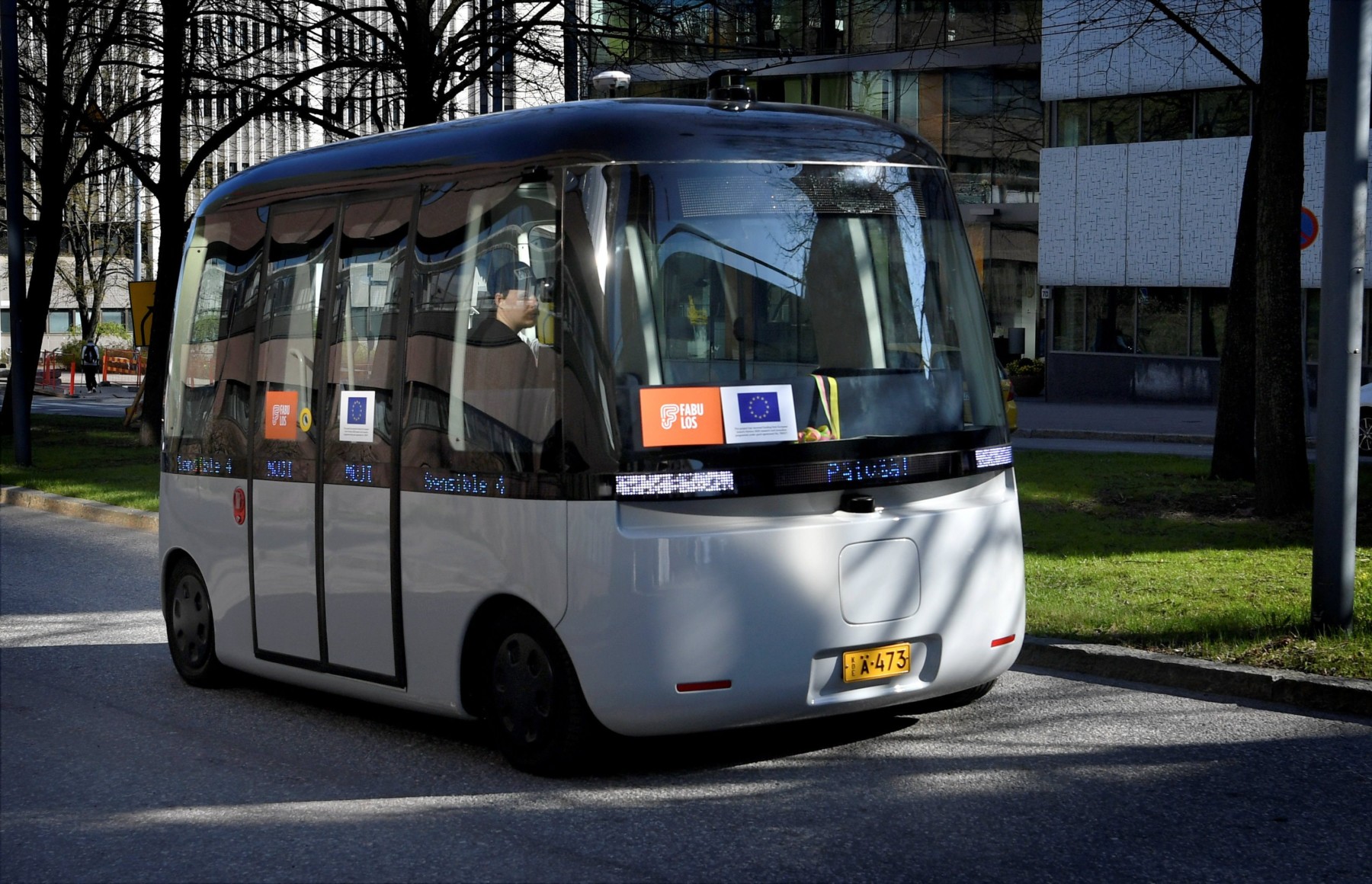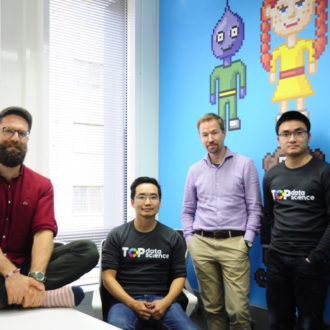I know enough about artificial intelligence (AI) to realise that I don’t know very much. I understand how AI is applied – enough to write about it occasionally – but I don’t understand how it really works or what it could mean for our societies.
To find out more I enrolled in the free online course Elements of AI, created by the University of Helsinki and the technology company Reaktor.
“Most people know that everything they do online is recorded, because data has huge value to the modern business,” says Ella Peltonen, research scientist at the University of Oulu. “The data needs to be refined and analysed so we can take action based upon it. This process is called AI.”
Whirring beneath the surface

This self-driving car belongs to the University of Oulu, where Ella Peltonen works. It is being used to study human-machine interaction and other topics as part of the 6G Flagship research programme, one of whose aims is to speed up digitalisation in society.Photo: 6G Flagship/University of Oulu
One of Peltonen’s focus areas is “everyday artificial intelligence.” She explains that AI is becoming ubiquitous today, from our phones to our homes, from our cars to our factories. AI is also being used quietly behind the scenes, helping to decide if we get a job offer, receive a loan, or get audited by the tax authority.
Recommendation engines are a common AI tool that you don’t necessarily notice as they whir and hum beneath the surface of the internet. They analyse data to find something you might be interested in, such as another article to read, a book to buy, or a movie to watch.
A challenge with these engines is that they tend to recommend similar things. For example, since you are reading an article about AI, a recommendation engine might direct you to more technology stories. If you only read these recommended stories, you might think of Finland only in terms of high tech, without discovering anything about Finnish cuisine, literature or nature. You would find yourself in a “filter bubble” or “echo chamber,” separated from dissimilar information.
“We use AI dozens of times daily, but in my opinion recommendation engines are the most impactful,” says Teemu Roos of the University of Helsinki. He’s the leader of the Elements of AI project. “They provide the social media posts and news stories we see. They can be used for political manipulation. People must understand the implication of AI to our political and democratic systems.”
Rolling out languages

Japanese company Muji’s Gacha autonomous shuttle bus drives through Espoo, just outside Helsinki, in May 2020. Finnish company Sensible4’s software integrates AI and sensor fusion to let the driverless vehicle operate in all weather conditions.Photo: Antti Aimo-Koivisto/Lehtikuva
Understanding how AI can affect our society is the reason for making the Elements of AI course free and open to the public. Finland is a good host for such a course because of the country’s long focus on technology and education. Finland and the EU have provided funding to make it available in all 24 EU languages.
More than a million people have completed the course. “We had a goal that one per cent of Finns would take the course, which we accomplished,” says Roos. “Our current goal is to reach one per cent of Europeans and then one per cent of the global population.”
Free knowledge for everyone

AI is about everyday applications that you’re already using, not just about the technology of the future. Your own Instagram feed or Google search are examples of recommendation engines that use AI. Illustration: Elements of AI
The Elements of AI course is filled with real-world examples, such as how AI can play a game of chess, determine which email is spam or recognise objects in photos. It also discusses the implications of AI, both the good and the bad. AI in a self-driving car might safely and quickly take me to work, for example, but it might also take the job of my bus driver.
Simple math exercises are included, but no coding. For that, there’s another course, Building AI. It promises to teach participants “more about the actual algorithms that make creating AI methods possible.”
After taking Elements of AI, I feel I better understand how AI works and what is at stake. As the course literature explains at the end, AI must be democratically regulated, and this means knowledge about the technology has to be freely available to everyone.
By David J. Cord, June 2020, updated June 2023







